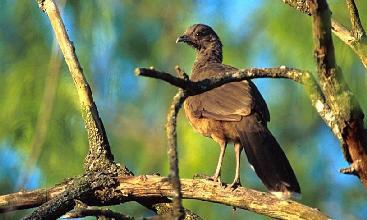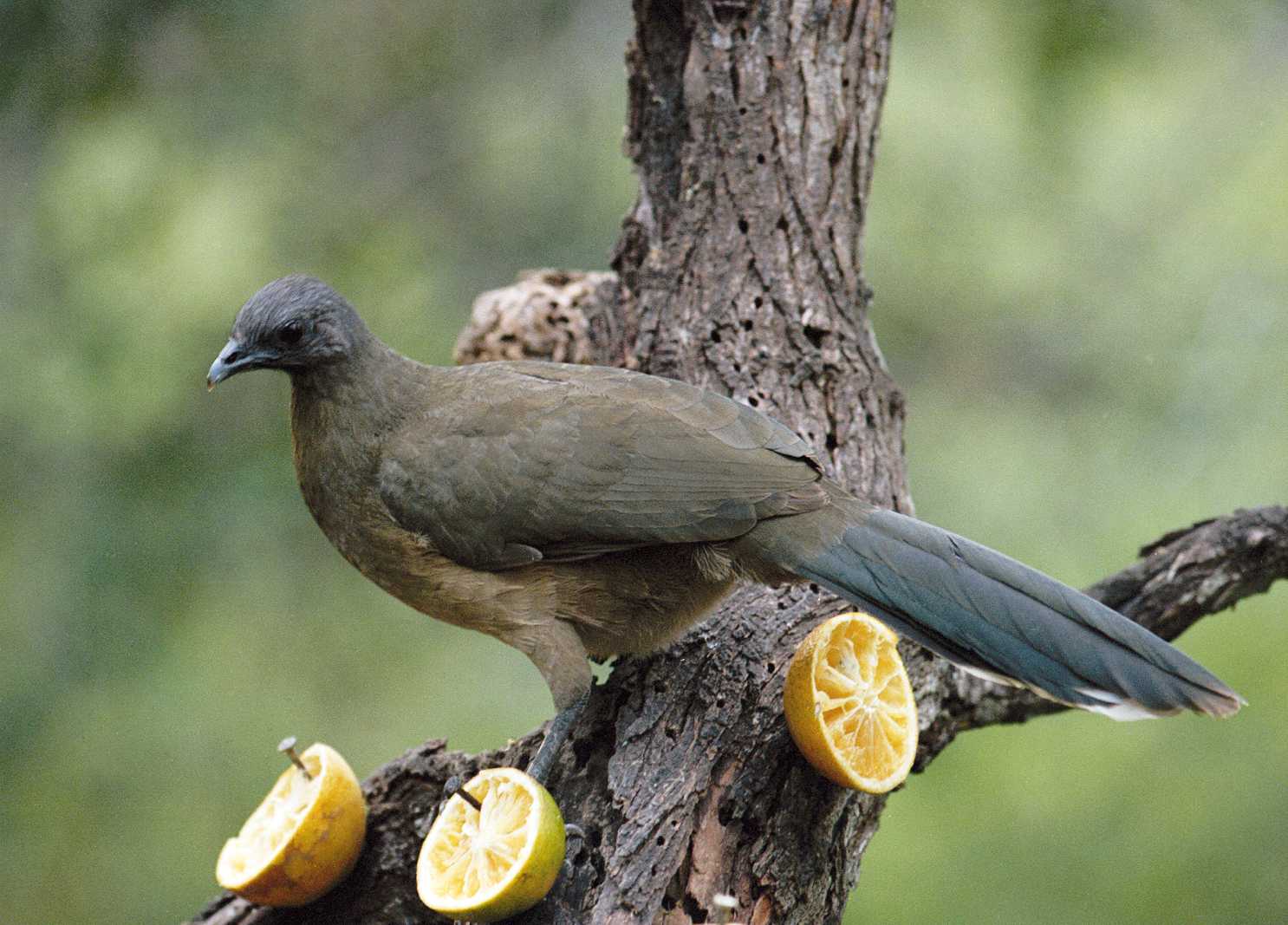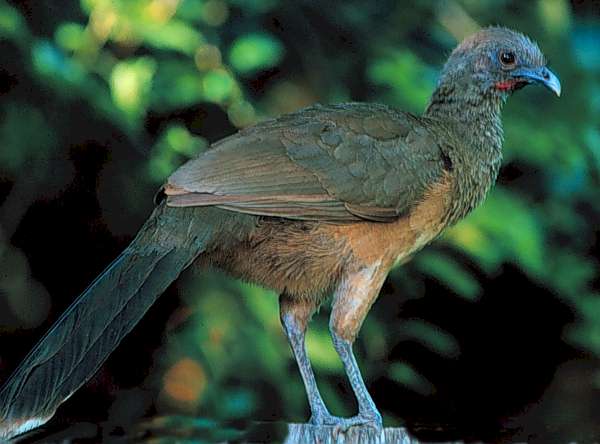I

Chachalacas are about twenty to twenty-four inches long. Characteristically they have small heads and dark brown feathers on their heads and backs, along with lighter brown feathers on thier chests. They have a very long greentinged tail with a white tip.
Solitary, Family Groups, Communities?
Any physical or behavioral features of the animal that contribute to its survival in its natural habitat.

The female chachalaca usually lays a clutch of about three to four eggs in a nest made mostly of sticks and lined with moss and leaves. Ocassionally they will use the old nest of other birds. The nest is usually made in a low tree branch or heavy vine which is three to five feet off of the ground. The eggs take three to four weeks to hatch and the chicks will leave the nest tow to three weeks after they hatch.
History of the animals at the zoo, your personal observations of the animal.

Another image here
Your name and E-mail address
Sources and Links:
Full bibliographic information for all sources
used in creating your page must be listed here. Include links for internet
sources.